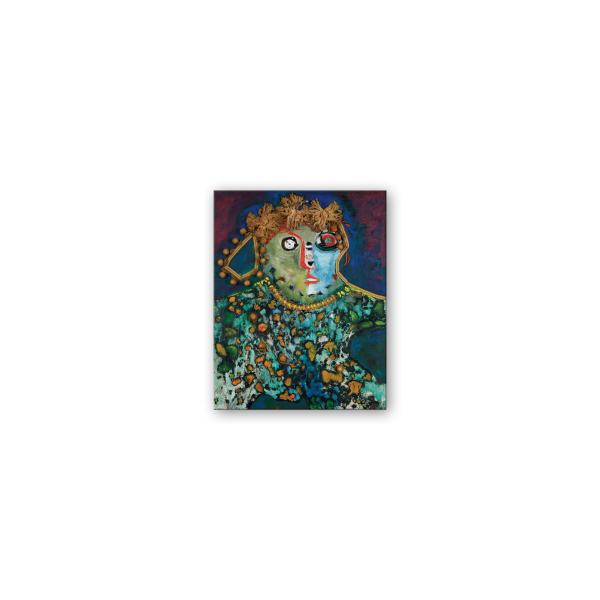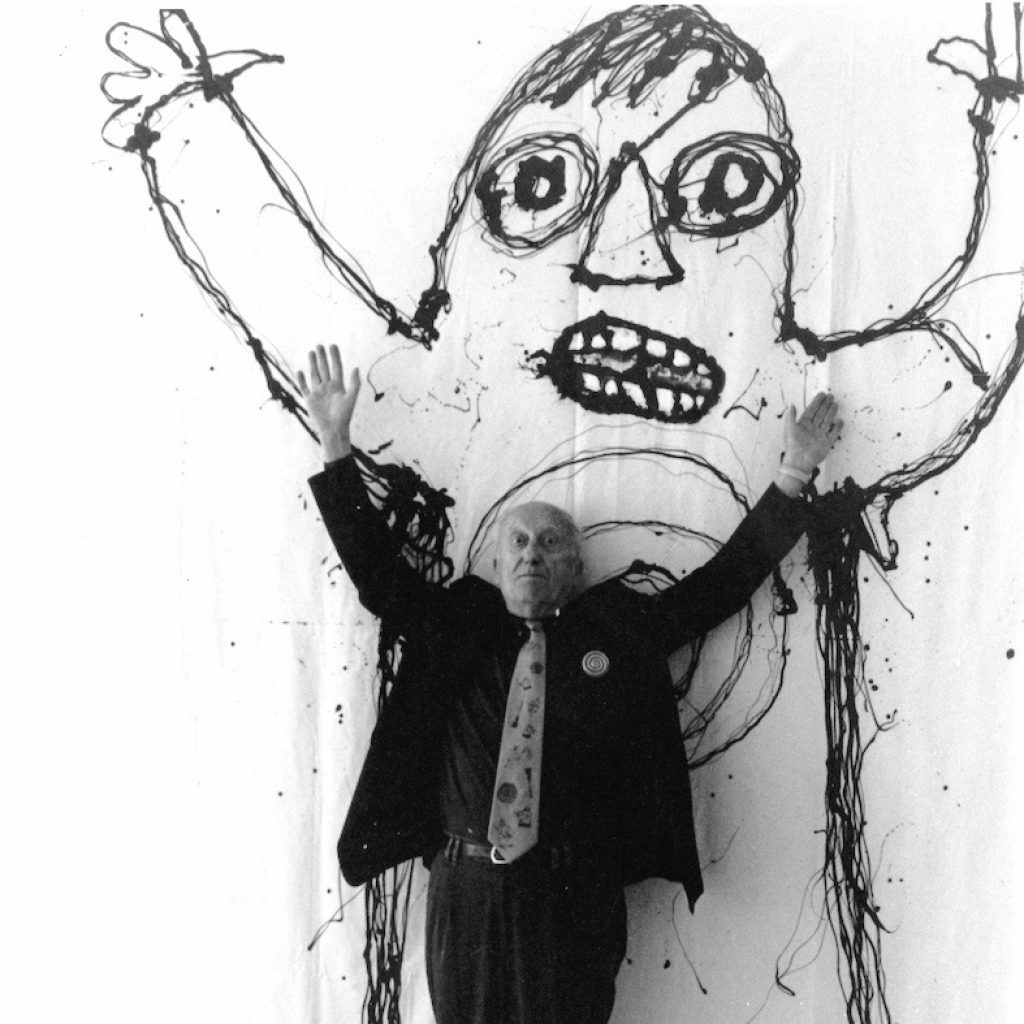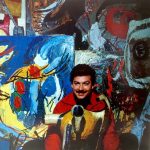Enrico Baj
Milan, 1924 – Vergiate, 2003
Enrico Baj was born in Milan on October 31st, 1924. He took part in the foreground of the avant-gardes of the Fifties and founded the Nuclear Movement, an innovative movement both from a formal and an ideological point of view, open to establishing contacts with European artists and intellectuals.
In addition to numerous solo and group exhibitions organized in Italy and throughout Europe, it should be mentioned the manifestos, including that of Nuclear Painting (1952) and Against Style (1957) in opposition to the systematic repetition of stylistic formalism. In 1954, together with Jorn, he founded the Mouvement international pour une Bauhaus imaginiste, which first sided against the geometrization of art. Baj’s work is articulated in various periods, under the unifying sign of desecrating irony and of the continuous renewal of expressiveness.
On the one hand, the “mirrors”, the “furniture”, the “meccani”, the “dame”, the “modifications”, the “d’aprés” (tributes and parodistic remakes of Picasso, Seurat and others) constitute the ludic and playful, where the pleasure of painting with all sorts of materials prevails. On the other hand, starting from the nuclear figurations of the Fifties, which bear witness to the fears that have followed Hiroshima and projected into the future, there is a strong civil commitment against any kind of aggression. Developping the themes of the “generals” and the “military parades”, Baj executed in the Seventies with three major works, the Funeral of the anarchist Pinelli (1972), Nixon Parade (1974) and the Apocalypse (1979).
During the Eighties, the criticism of contemporaneity, the indiscriminate use of technologies, the robotisation of man in present-day society, the prevalence of form over substance, the spectacularisation and consumism remain the main themes of Baj’s oeuvre.




